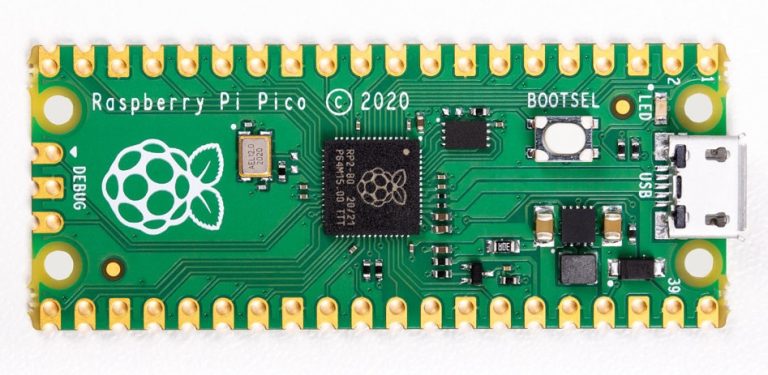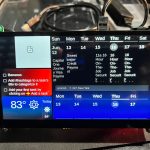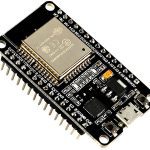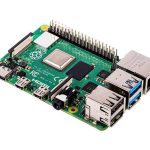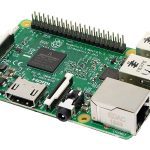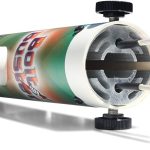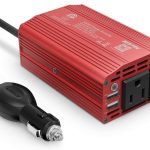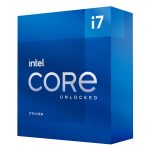The Raspberry Pi Pico is a revolutionary RP2040 microcontroller from Raspberry Pi. It combines the latest technology with an intuitive design, creating a powerful and easy-to-use platform for your project needs. With its low price point and superior performance, it’s no wonder why this device has become so popular among makers and hobbyists alike. With features like built-in support for Python and a wide selection of GPIO pins, the Raspberry Pi Pico can be used in a multitude of DIY projects. In this review, we’ll take a look at the Raspberry Pi Pico’s features, specs, pros and cons to help you decide if it’s the right microcontroller for your needs.
Raspberry Pi Pico – RP2040 microcontroller Review

Raspberry Pi Pico – The Best RP2040 Microcontroller
Are you looking for a powerful and reliable microcontroller? If so, then the Raspberry Pi Pico with its RP2040 chip is the perfect solution for you! It’s an incredibly versatile microcontroller that can do just about anything. With its low cost and high performance, it’s ideal for a variety of applications from hobbyists to professionals. It’s also easy to program, with support for C/C++, MicroPython, and other languages.
Key Features:
1. Dual-core ARM Cortex-M0+ processor running at up to 133MHz
2. 26 multi-function GPIO pins
3. 2MB of on-board Flash memory and 264KB of SRAM
4. USB 1.1 with device and host support
5. Castellated module allows soldering direct to carrier boards
6. Flexible power options – USB or external sources
7. On-board temperature sensor
8. 8× Programmable I/O (PIO) state machines for custom peripheral support
The Raspberry Pi Pico is truly an amazing microcontroller that offers maximum flexibility and performance in a very small package. It has the power to handle complex tasks and the ease of programming that makes it ideal for beginners and experienced developers alike. Whether you’re looking for a basic microcontroller or something more sophisticated, the Raspberry Pi Pico has you covered. With its RP2040 chip, this microcontroller provides all the features you need for your next project or prototype. So grab one today and get started on your next great invention!
Product Details
(…)
Raspberry Pi Pico – RP2040 microcontroller Pros and Cons
1. Pros
Raspberry Pi Pico – RP2040 microcontroller is a great choice for anyone looking to create their own unique projects and applications. Its low cost and easy-to-use design make it perfect for hobbyists, students, and professionals alike. With its powerful dual-core processor and versatile GPIO pins, the Raspberry Pi Pico allows users to easily build a wide range of projects from simple LED blinkers to complex robotics systems. Plus, the on-board power supply makes powering your project a breeze!
2. Cons
Raspberry Pi Pico – RP2040 microcontroller does have some drawbacks that may be worth considering before making a purchase. For instance, the device isn’t compatible with all existing Raspberry Pi accessories such as cameras and displays. Additionally, the onboard RAM can become quickly overwhelmed when running complex programs which can lead to slowdowns or crashes. Finally, the lack of support for certain programming languages such as Python might be a deal breaker for more experienced users.
Who are They for
The Raspberry Pi Pico is a powerful and versatile microcontroller board based on the RP2040 chip. With two CPUs, 16MB of Flash memory, 8KB of SRAM, and plenty of I/O options, it is perfect for embedded projects, robotics, IoT applications and more. The onboard USB port allows for direct programming with the MicroPython or C/C++ languages without the need for additional hardware. Thanks to its low cost and small form factor, you can now explore the world of embedded electronics without breaking the bank!
The Raspberry Pi Pico comes preloaded with an operating system that supports writing programs in either MicroPython or C/C++. This makes it easy to get started quickly with a variety of projects. In addition to this, the board also features an array of GPIO pins which allow users to connect external components such as sensors and motors to their projects. Furthermore, with its built-in WiFi and Bluetooth capabilities, you can easily create wireless connections between your Raspberry Pi Pico and other devices like smartphones or tablets.
The Raspberry Pi Pico is a great choice for makers or hobbyists who want to explore the world of embedded electronics without spending too much money. Whether you’re building robots, creating IoT devices, or just tinkering around, this board has all the features you need to get started quickly and easily. Plus, since it supports both MicroPython and C/C++ programming languages, you can easily create powerful programs that interact with your physical surroundings in exciting ways.
My Experience for Raspberry Pi Pico – RP2040 microcontroller

It all started with a dream. I wanted to be able to create something amazing and powerful, but I didn’t know how. That’s when I discovered Raspberry Pi Pico – the RP2040 microcontroller!
This incredible little device has revolutionized my life as a maker and tinkerer. I can now make projects that are more complex, diverse and powerful than ever before. With its low power consumption, ultra-fast processing capabilities and amazing memory capacity, the Raspberry Pi Pico is an absolute must-have for anyone looking to take their projects to the next level.
From controlling robots to creating home automation systems, the possibilities are truly endless with this microcontroller. It’s simple enough for beginners yet powerful enough for experts, so you can make whatever you can imagine with it. Plus, its tiny size makes it easy to fit into any project without taking up too much space!
The Raspberry Pi Pico is truly a game changer for makers and developers alike. Thanks to its versatility and capability, I’m now able to do things that used to seem impossible. If you’re looking for an affordable, versatile and powerful way to bring your ideas to life, the Raspberry Pi Pico is the perfect solution!
What I don’t Like
Product Disadvantages List:
1. Limited to RP2040 microcontroller
2. No Wifi or Bluetooth Connectivity
3. Not compatible with all Raspberry Pi accessories
4. Low RAM and Flash Memory
5. No built-in analog-to-digital converter (ADC)
How to Build a Smart Home Device with Raspberry Pi Pico
If you want to create a smart home device, the Raspberry Pi Pico is an ideal choice. Its RP2040 microcontroller makes it easy to build DIY projects with lots of features and capabilities. With this tiny powerhouse, you can easily create your own devices that are capable of controlling lights, fans, motors and more. Here’s how to get started!
First, you’ll need to get some basic components: a Raspberry Pi Pico board, several male-to-male jumper wires, and a USB cable for programming. You’ll also need the Thonny IDE, which allows you to write code in Python for the Pico. Once you have everything you need, it’s time to get started building!
The first step is to connect all of your components together. Plug one end of your USB cable into the Pico board and the other into your computer; then use the jumper wires to connect the Pico board’s GPIO pins to any external components (like sensors or LEDs) that you plan on using in your project.
Next, open up Thonny IDE and start writing code. Depending on what kind of device you’re making, there are lots of different ways to use Python to control GPIO pins and read data from sensors. There are plenty of tutorials online that can help guide you through these steps.
Finally, once you’ve written all of your code, it’s time to upload it onto the board. All you have to do is click the “Run” button in Thonny and wait for your program to upload – that’s it!
Now that your Raspberry Pi Pico has been programmed with your custom code, it’s ready to be put into action as part of a smart home setup. With just a few simple steps, you can create powerful IoT devices that can automate tasks around your home – from turning on lights when it gets dark outside to adjusting the temperature based on occupancy levels. The possibilities are endless!
Questions about Raspberry Pi Pico – RP2040 microcontroller
What is Raspberry Pi Pico?
Raspberry Pi Pico is a low-cost, high-performance microcontroller board based on the RP2040 chip. It features flexible digital interfaces, powerful low-power processing and robust I/O control. With its built-in debuggers and wide range of development tools, Raspberry Pi Pico makes it easy to bring your ideas to life.
How do I get started with Raspberry Pi Pico?
Getting started with Raspberry Pi Pico is easy! All you need to do is plug in the USB cable, download the Pico C/C++ SDK, and start coding! You can also explore our extensive library of tutorials and examples to learn how to use all of the features of your new device.
What programming languages are supported by Raspberry Pi Pico?
Raspberry Pi Pico supports several programming languages including Python, C/C++, MicroPython, and more! We have a range of development tools that make it easy for you to develop applications for your device.
What kind of projects can I create with Raspberry Pi Pico?
With Raspberry Pi Pico, you can create almost anything! From robotic projects to home automation systems and interactive art installations, the possibilities are endless. With its flexible digital interfaces, powerful low-power processing and robust I/O control, there’s no limit to what you can create!

Hi, I’m Lawrence! I’ve always been passionate about technology and gadgets. I love learning new things and exploring the latest advances in electronics. I'm enthusiastic about sharing my knowledge with others and helping them get the most out of their devices.
| Product | Details |
|---|---|
| Raspberry Pi Pico – RP2040 microcontroller | RP2040 microcontroller chip, dual-core Arm Cortex-M0+ processor, flexible clock running up to 133 MHz, 264KB of SRAM, and more. |
| Form Factor | USB stick form factor, measuring just 51 x 21 mm. |
| Connectivity | 2 × Programmable I/O (PIO) state machines for custom peripheral support, 8 × Programmable I/O (PIO) pins with internal pull-ups, 2 × SPI controllers, 2 × I2C controllers, 4 × UARTs, 1 × USB 1.1 controller, 16 × PWM channels. |
| Power Supply | USB powered or 3V3 via pin header. |
| Embedded Debugger | On-chip debugging system with non-intrusive debug support. Breakpoints and watchpoints supported. |
| Programming Language Support |

